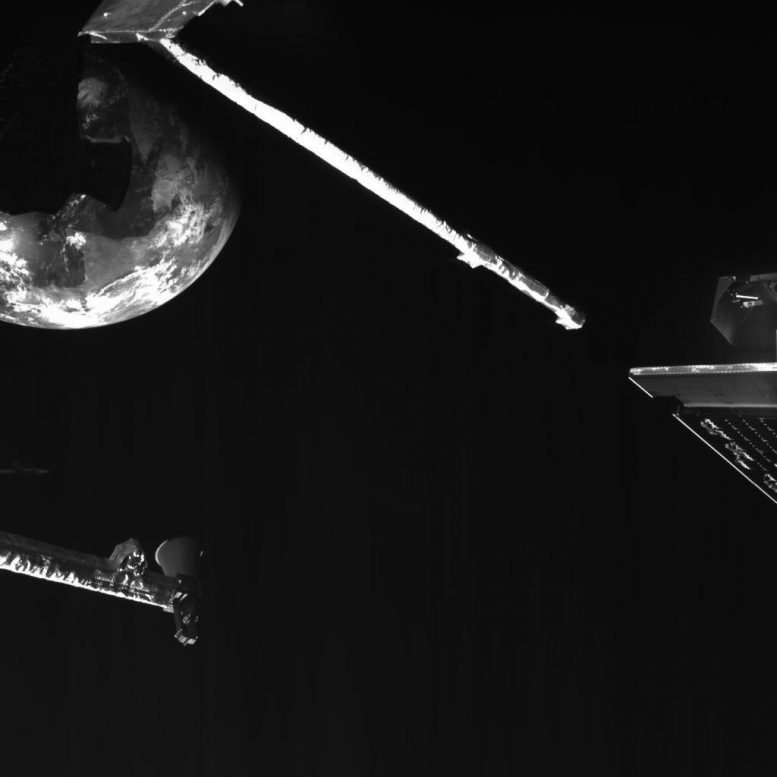On 10th April, the ESA / JAXA BepiColombo mission completed its first flyby, as the spacecraft arrived less than 12,700 km from Earth’s surface at 06:25 CEST, directing its trajectory towards final destination Mercury. Images gathered just before closest approach shows our world sparkling through the darkness, during one of the most challenging periods in modern history for humanity.
As per the reports, a joint mission BepiColombo was conducted by the European Space Agency (ESA) and the Japan Aerospace Exploration Agency (JAXA) in 2018. Some reports even suggested that it is on a seven-year journey to the smallest and innermost planet orbiting the Sun, which contains important information about the entire Solar System’s creation and evolution.
Fortunately, the spacecraft was well prepared to take advantage of the opportunity, because BepiColombo carries three separate cameras, in addition to its more advanced scientific instruments. Mission workers still process many of the images captured by the spacecraft, but both ESA and JAXA released individual images as well as animated series created as BepiColombo moved towards Earth.
The cameras are set up to take “selfies,” and all new images show the Earth as well as the spacecraft’s bits and pieces themselves. The “spacecraft” is a bit of a misnomer. While BepiColombo actually flies as one unit, it consists of three different units: JAXA’s Mercury Magnetospheric Orbiter, ESA’s Mercury Transfer Module, and ESA’s Mercury Planetary Orbiter, which is ferrying the two scientists.
“Today was of course very different to what we could have imagined only a couple of months ago,” said Johannes Benkhoff, ESA’s BepiColombo Project Scientist, who followed the operation from his home in the Netherlands, along with the many scientists from the 16 instrument teams that comprise the mission, scattered between Europe and Japan.
“We are all pleased that the flyby went well and that we could operate several scientific instruments, and we are looking forward to receiving and analysing the data. These will also be useful to prepare for the next flyby, when BepiColombo will swing past Venus in October.”
“There is a great interest in Japan in the BepiColombo mission. Thus, after the successful flyby we are looking forward to the science at Venus and Mercury,” said Go Murakami, BepiColombo Project Scientist at JAXA.
Günther Hasinger, ESA’s Director of Science, who also followed the event remotely from home in Spain said in a statement, “These selfies from space are humbling, showing our planet, the common home that we share, in one of the most troubling and uncertain periods many of us have gone through.”

